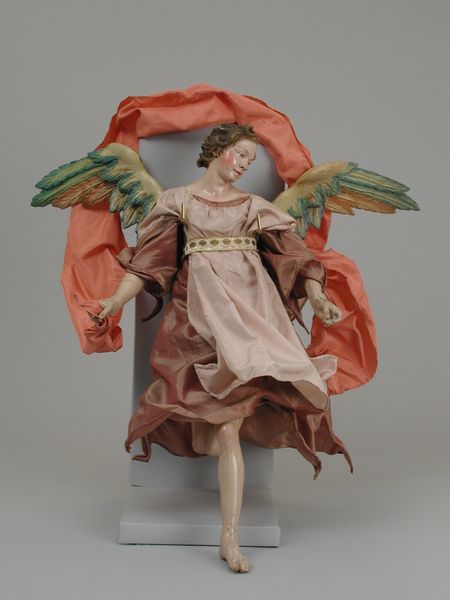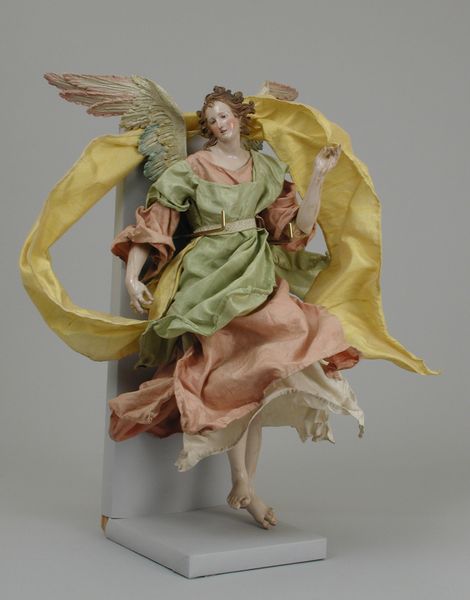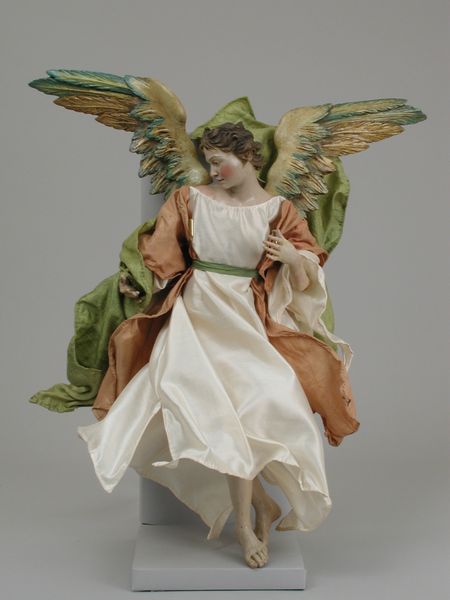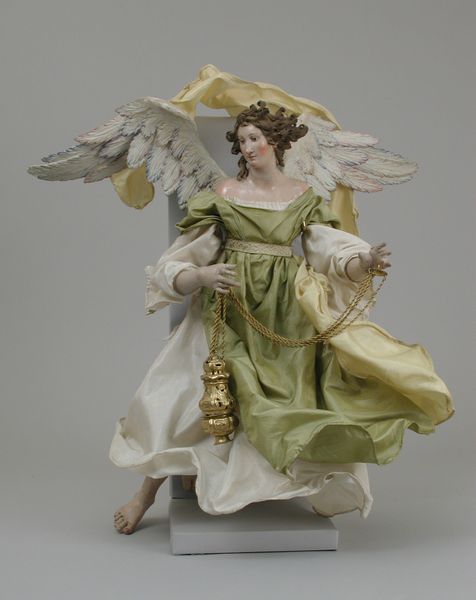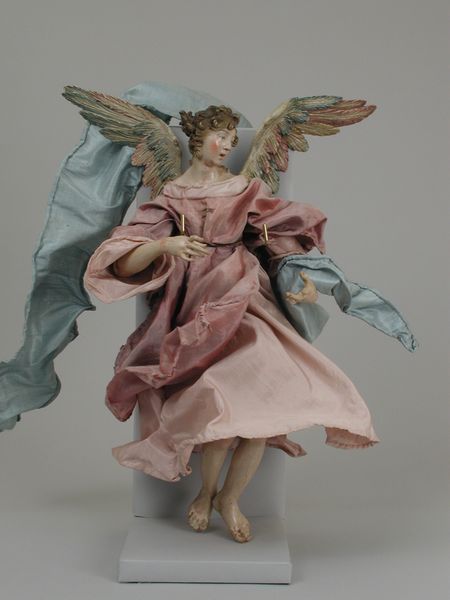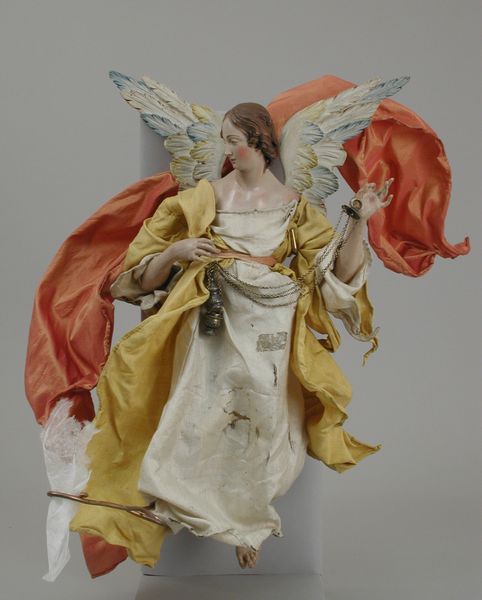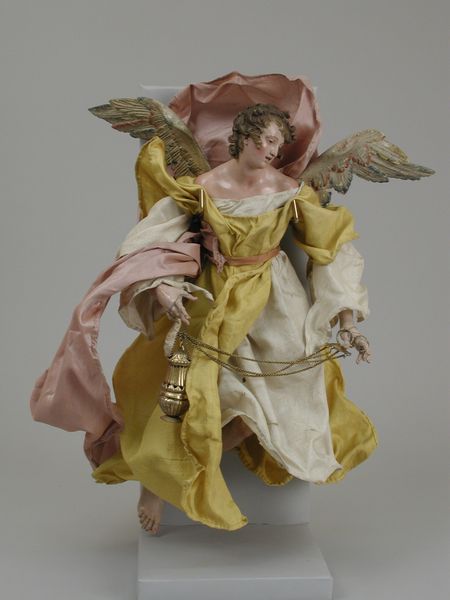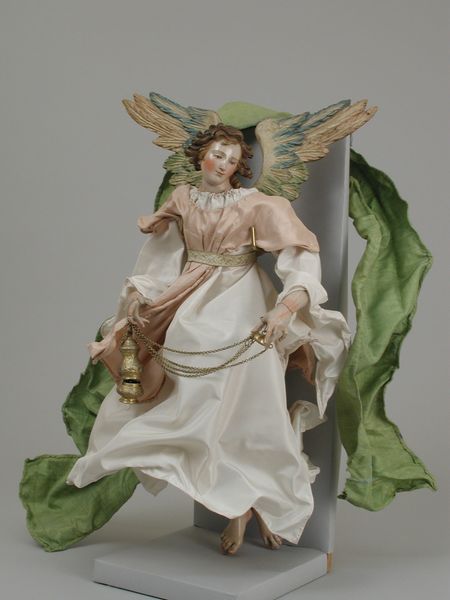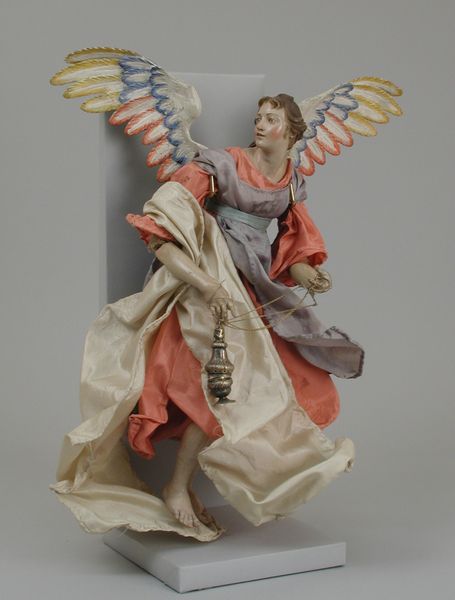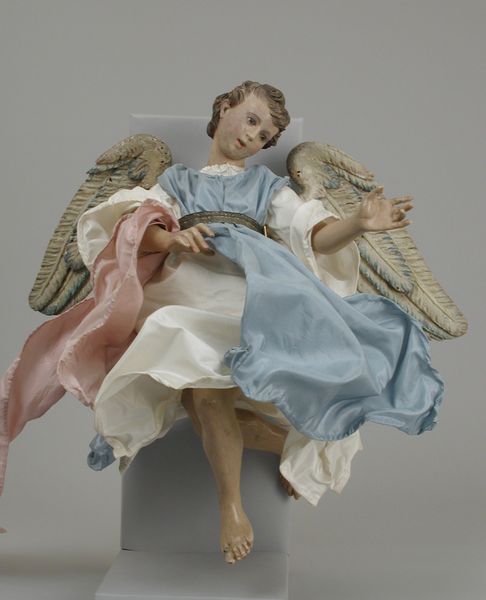
sculpture, wood
#
baroque
#
sculpture
#
figuration
#
sculpture
#
wood
#
decorative-art
#
angel
Dimensions: H. 16 in. (40.6 cm.)
Copyright: Public Domain
Curator: Oh, this angel! There’s such a sense of almost defiant grace in its stillness, don't you think? Editor: Defiant? I immediately notice a deep serenity about it. There’s an ethereal quality, amplified by the movement in the red cloth that spirals around it. Curator: Let’s orient our listeners. Here we have a wooden sculpture of an angel, made sometime in the 18th century and attributed to Giuseppe Sanmartino. It now lives at the Metropolitan Museum of Art. The artist truly brings an ethereal essence into earthly form, which feels...paradoxical. I use ‘defiant’ because she’s *right here* in all her glory, existing on our plane, unafraid to fully occupy the space. Editor: Right, and the context of the 18th century informs how we understand her. Baroque art sought to inspire awe and religious fervor. Considering the socio-political landscape, religious iconography served as a powerful tool, reinforcing doctrines and class hierarchies. This angel’s serene face is almost a passive defiance against the toils of that period. Curator: Her gown is rendered with such tactile quality; you can almost feel the silky weight of it pooling around her feet. There's incredible drama in how the robes and her wrap swirl and catch the light, which brings me to wonder about its construction: it gives the impression the red garment is unanchored but is likely mounted somehow for proper form. Editor: It’s a beautiful detail, and technically compelling for the era. I am also very drawn to its delicate expression; the slightly downward gaze hints at vulnerability. And the use of wood gives the piece a warmth that is distinct from marble sculptures we might find in a similar religious context. I am now reminded how different textures and forms might impact one's reception of such a sacred being. Curator: The softness that comes with that wood is a poignant feature in achieving her overall look. What remains with me is how cleverly it embodies motion within an ostensibly still, religious artwork, successfully portraying how an angelic figure, although present on Earth, would possess divine autonomy to exist both with and apart from our earthly dimensions. Editor: Yes, there's an undeniable magnetism that transcends the devotional purposes for which she might have been created. Thinking about her in this space has given me pause to consider our individual understanding of divine iconography, how culture and belief impact these beautiful and very complex aesthetic experiences.
Comments
No comments
Be the first to comment and join the conversation on the ultimate creative platform.

